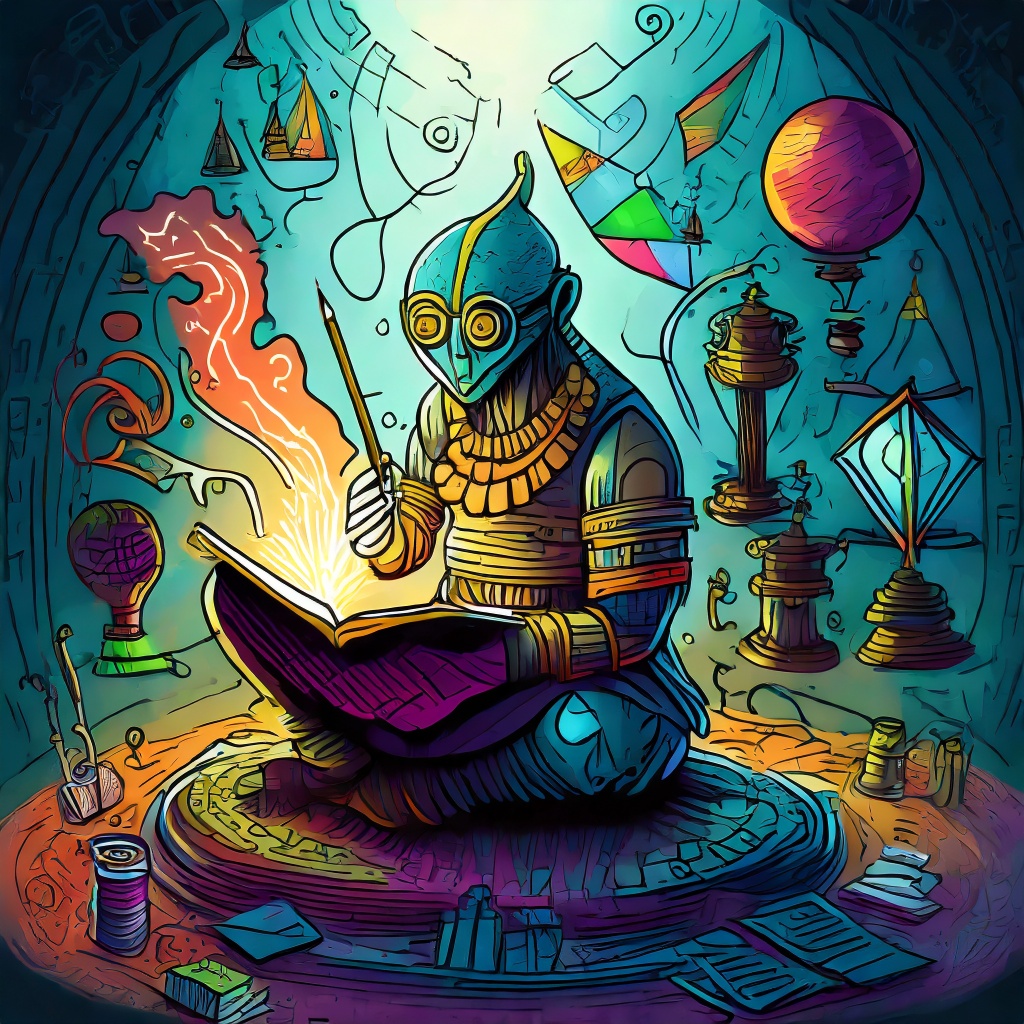Tags
The following post is entirely generated using AI. It is based on the sixth AI Conversation session that took place today where Elliot Burns and James Irwin answered questions around the topic, Ethical Curating with AI Tools. The session was recorded in MS Teams, which automatically created a transcript. The transcript was summarised in Claude and the blog post was generated using ChatGPT4. Image created by Adobe Firefly

Unveiling a New Era of Curatorial Ethics: A Journey with AI at Central Saint Martins
In an era where artificial intelligence (AI) intertwines with various facets of life, Central Saint Martins (CSM) and London College of Communications (LCC) embarks on a pioneering journey to blend AI with curatorial ethics. The first-year BA Culture, Criticism, and Curation course, led by Elliot Burns, recently conducted an intriguing project that not only engaged students with AI but also plunged them into the depths of ethical curation.
AI Meets Michael Mann’s Scripts: A Challenge of Representation
The project revolved around the Center for Investigative Journalism (CIJ) archive, specifically the film scripts by director Michael Mann. These scripts, known for their limited portrayal of female characters, became a canvas for the students to explore and challenge existing narratives. By extracting dialogue from these characters, the students, guided by James Irwin, created a dataset to train a GPT-3 model. This AI-driven endeavor resulted in 26 pages of AI-written text, offering expanded narratives for these female characters.
Ethical Dilemmas and AI: Protecting Fictional Characters and Beyond
However, this innovative project was not without its challenges. The students faced a myriad of ethical issues, from feeling protective over fictional characters to dealing with biases inherent in the scripts and the AI outputs. The AI-generated content sometimes reinforced sexist tropes or deviated from the intended focus on female conversations. Such issues raised crucial questions about responsibility in representation, especially when dealing with traumatic content or biases.
Curating the AI: A Delicate Exhibition at CSM Library
The culmination of this project was an exhibition at the CSM library. Here, students had to thoughtfully present the AI content, considering the project’s ethical implications. The choices they made in this representation were crucial, especially in demonstrating AI biases while protecting viewers from potentially disturbing material.
Learning Through Iteration: Understanding AI’s Limitations and Biases
The project’s phased approach allowed students to gradually understand the limitations of AI, especially compared to more conversational models like ChatGPT. These learnings were vital in fostering a nuanced understanding of AI, its biases, and the human effort required in crafting ethical AI applications.
Student Engagement and Archive Partners: A Mixed Bag of Reactions
While some students drifted away, others deeply engaged with the project, particularly the ethical dimensions of AI. The involvement of archive partners, such as CIJ, introduced an additional layer of complexity, particularly around the use of copyrighted material. However, the educational context of the project offered a safeguard against wider public exposure and potential harm.
Looking Ahead: Refining the Process for Future Projects
Elliot Burns emphasized the need for a more selective approach in dataset curation and pacing in future projects. This project highlighted how hands-on AI workshops could bring to the surface critical issues around bias, stereotyping, and the responsible use of AI.
Conclusion: A New Frontier in Ethical AI Education
This project at CSM stands as a testament to the possibilities and challenges of integrating AI into education, particularly in fields like curatorial studies. It underscores the importance of ethical considerations, responsible AI prompting, and the protection of marginalized voices. As we move forward, such educational initiatives are crucial in preparing students not just in the use of emerging technologies, but in understanding their broader societal impacts and ethical implications.
